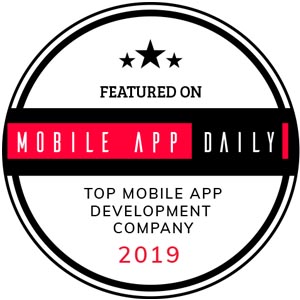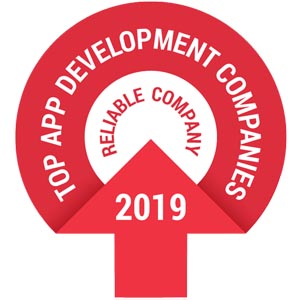Digital marketing, like many other disciplines, is undergoing a profound transformation driven by artificial intelligence (AI). From automating time-consuming tasks to delivering hyper-personalized customer experiences, AI is improving operations for businesses of all types and sizes.
So, the question today isn’t whether to capitalize on AI to help your business connect with potential customers or clients but rather, “What is the best AI tool for digital marketing?” This article provides some insights.
Why Use AI in Digital Marketing?
Integrating AI into your digital marketing processes delivers several benefits. AI empowers marketers to process and analyze huge quantities of data quickly, revealing trends and preferences that would be impossible to uncover manually.
This data-driven approach enables businesses to optimize campaigns, making them more efficient and effective. Companies are also leveraging AI to automate repetitive tasks, freeing their marketing teams to focus on strategic thinking, creativity, and establishing genuine customer relationships.
Why use AI in digital marketing? In short, because it enables enhanced personalization, improved targeting, and a significant return on investment (ROI) boost.
Top Tools by Digital Marketing Category
It’s challenging to identify the “best” AI tools for specific digital marketing functions, as that label depends on a company’s specific needs. However, below are some of the top AI tools across key categories:
Content Creation & Curation
- Jasper AI (formerly Jarvis): Known for its ability to generate high-quality, long-form content, this tool is a popular choice for marketers looking to grow their content production. Importantly, it offers various templates and tones to suit different brand voices.
- ChatGPT: ChatGPT is widely used by marketers for brainstorming, drafting, and refining content. Its natural language processing capabilities enable it to help with a wide range of writing tasks.
- Surfer SEO: Beyond content creation, this tool helps businesses optimize content for search engines, providing data-driven recommendations to improve ranking.
- CopyAI: This product specializes in generating diverse copy variations, from product descriptions to paid ad copy, from a simple input.
Search Engine Optimization (SEO)
- Semrush: This all-in-one digital marketing suite leverages AI for comprehensive SEO research, content optimization suggestions, and in-depth competitor analysis.
- MarketMuse: This tool uses AI to analyze website content and provide personalized, data-driven insights for content planning and optimization, identifying content gaps and competitive advantages.
- Ahrefs: This platform integrates AI capabilities for advanced keyword research, backlink analysis, and site auditing.
Social Media Marketing
- ai: This tool generates and manages social media content, including ad copy and visually engaging posts. It can also repurpose existing content into various formats.
- Brand24: This AI social listening product monitors and analyzes conversations about your brand across social media, offering valuable insights into sentiment and trends.
- Hootsuite Insights: Marketers use this product for social media monitoring and analytics. It helps them understand audience engagement and campaign performance.
Email Marketing
- Seventh Sense: This is an AI email marketing tool that determines the ideal times and frequencies for sending emails to enhance engagement.
- Phrasee: This product uses AI to generate and optimize email subject lines and other marketing copy to improve open rates and click-through rates.
- Mailchimp: Mailchimp utilizes AI for smart recommendations and segmentation to improve campaign performance.
Advertising & PPC
- Albert AI: An AI platform for digital advertising, this system manages and optimizes ad campaigns using machine learning to enhance performance.
- Omneky: Omneky specializes in ad optimization, using AI to personalize ad creative and targeting for various platforms.
- ai: This tool capitalizes on AI to produce conversion-oriented ad and social media creative.
Chatbots & Customer Service
- Drift: Drift is a conversational AI marketing platform that interacts with website visitors in real time, enhancing customer engagement and lead generation.
- ManyChat: This product allows businesses to build multi-platform chatbots for managing marketing chat content and automating customer inquiries.
- Chatfuel: A popular tool for building chatbots, Chatfuel specializes in customer service and marketing interactions.
Analytics & Reporting
- Google Analytics Intelligence: Google’s own AI capabilities within Analytics provide automated insights.
- Tableau: A leading data visualization tool with AI capabilities, Tableau transforms complex data into actionable insights, helping marketers analyze performance.
- Oribi: Oribi is an analytics tool that automatically tracks website events and suggests improvements, identifying strengths and opportunities for conversion optimization.
Challenges of Implementing AI in Digital Marketing
Implementing AI in digital marketing has many benefits but also several hurdles. One challenge is the quality and availability of data, as AI models are only as good as the data on which they are trained. Data privacy and security are also significant concerns since AI systems may access sensitive customer information. Then, there is the challenge of what’s called algorithmic bias, where AI systems can perpetuate or even amplify existing stereotypes or prejudices.
Companies must also contend with the complexity of integrating diverse AI tools into existing marketing stacks and training their teams in new competencies to leverage AI effectively.
Tips for Finding Your Best AI Tools
With all the AI tools available, it’s crucial to be methodical in how you identify the right ones for your needs. Here’s a proven process to follow:
- Define your needs and goals first.
- Start small and scale your use of AI.
- Prioritize integration with your existing marketing tools and processes.
- Consider the user-friendliness of each AI tool or platform.
- Read reviews and case studies to understand a product’s real-world benefits and challenges.
- Leverage free trials.
- Evaluate vendor support and the pace of a company’s product development to ensure its offerings are continually evolving.
The Future of AI in Digital Marketing
Despite being a new addition to the marketing toolkit that continues to evolve, AI is clearly here to stay. From content creation and decision-making to complex analysis of market trends and audience preferences, AI-empowered tools are helping businesses reach their audiences and promote their products and services more effectively.
How can AI elevate your digital marketing? Contact us, and let’s talk about your goals and how we can help you leverage the latest technology to achieve them.

Split Reef is a modern, results-driven digital organization always ready to support clients in their search for digital supremacy. With Split Reef, your budget isn’t going to hold you back from partnering with us to make your project successful. Our offices are located in Columbus, Ohio and Jacksonville, Florida.


















